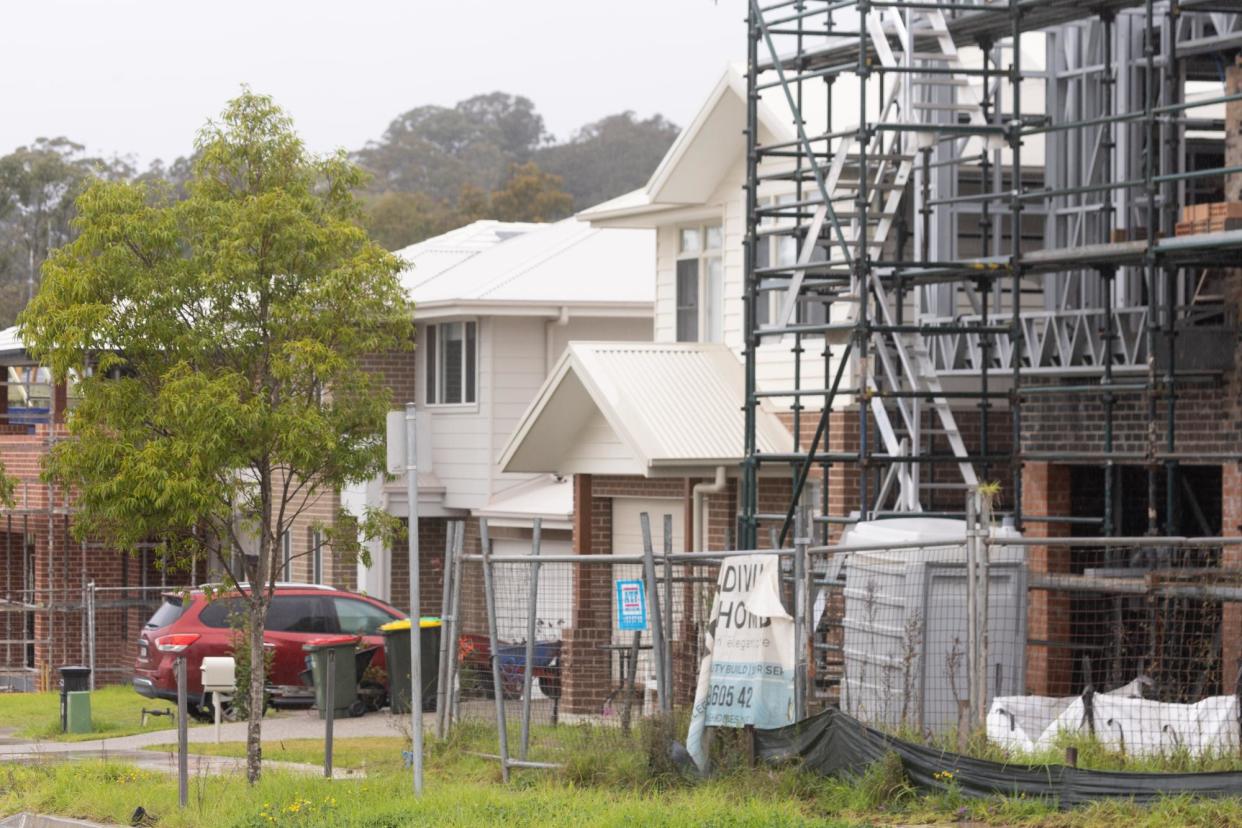NSW government reveals where 377,000 new homes will be built in Sydney and regional areas by 2029

New South Wales councils that meet and beat new housing targets will be given extra cash for sporting facilities, parks, footpaths and road maintenance as part of the state government’s push to build nearly 400,000 new homes over the next five years.
The premier, Chris Minns, announced the updated housing targets for 43 councils on Wednesday along with the $200m incentive scheme, as the government attempts to speed up infill development across Sydney.
The NSW government needs to build 377,000 new homes across the state by 2029 in order to meet its obligations under the national housing accord.
Under the government’s new “fairer” housing targets, a total of 263,400 new homes will need to be built across Sydney’s local government areas.
Councils in Sydney’s eastern and northern suburbs will be responsible for delivering about 41% or 107,100 of those new homes.
Councils in the city’s “central” local government areas, such as Parramatta and Cumberland, have a combined target of 97,200 new homes. The government wants 59,100 new homes built across the western suburbs council areas such as Penrith.
A further 113,600 new dwellings have been allocated across regional NSW.
The Central Coast has a target of 9,400 new homes, the Illawarra-Shoalhaven region has a goal of 18,880 new homes, and greater Newcastle will need to aim for 30,400 new homes.
The rest of regional NSW will have a combined target of 55,000 new homes.
Under the targets, 82% of all new homes would be built in established “brownfield” areas and 18% would be built in undeveloped “greenfield” locations.
Minns said the ambitious targets would be “hard to meet” but they would start to rebalance Sydney towards “almost exclusively” brownfield development.
He said one of the reasons housing targets had failed was the “enormous burden” placed on western Sydney, in areas lacking infrastructure for their growing populations.
“We’ve asked local councils to pick up the slack, to maintain the roads, to provide the parking, to make sure services are there for entire new communities but they haven’t been given the help they need to do it,” he said.
“That’s why we are introducing these additional incentives today.”
The government will set aside $200m in grants to encourage the dozens of councils with updated local housing targets to do more; money will go only to the councils that meet “key milestones”.
The government will also soon release a council “league table” that compares planning performance between areas.
Late last year the Labor government announced it would rezone land around dozens of train stations and transport hubs for denser housing to allow for uplift along transport corridors.
It also announced a speculative plan to build two new metro stations and transform the Rosehill racecourse into a site for tens of thousands of homes, which the premier described as a “once-in-a-generation opportunity” to deal with the state’s chronic housing crisis.
According to KPMG analysis released on Tuesday, developers have yet to begin work on about 40,000 new homes across Australia – including 11,170 in Sydney – despite being granted building approvals. Stubbornly high interest rates and construction costs have been blamed for the delays.
The research found that more than 15,000 dwellings with planning approval across the state had yet to start by December 2023. That was only a slight improvement on the state’s figures a year earlier, when there were 15,818 approved dwellings across NSW where work had not yet commenced.

 Yahoo News
Yahoo News 
